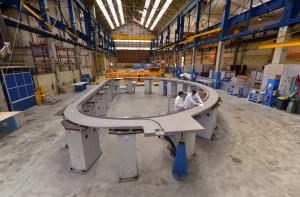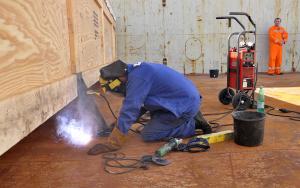The Russian captain has answered the question more than a thousand times but he obviously likes to tell the story: the Echion, his 3,000-tonne cargo ship, owes her name to one of the Argonauts, the ancient Greek heroes who accompanied Jason on his quest for the Golden Fleece.
The Echion docked last Saturday at the Mediterranean port of La Seyne-sur-Mer, 65 kilometres east of Marseille. The load she was to take delivery of sat just on the other side of the road—a highly sophisticated, 21st century piece of equipment in a 19th century steel and red brick hall that Gustave Eiffel (of Eiffel Tower fame) designed a century and a half ago.
The component was produced by
Constructions Industrielles de la Méditerranée (CNIM), under a contract awarded by F4E, the European Domestic Agency for ITER, three years ago. Another European company, the Italian
SIMIC S.P.A, also produced a radial plate prototype using different technologies.




